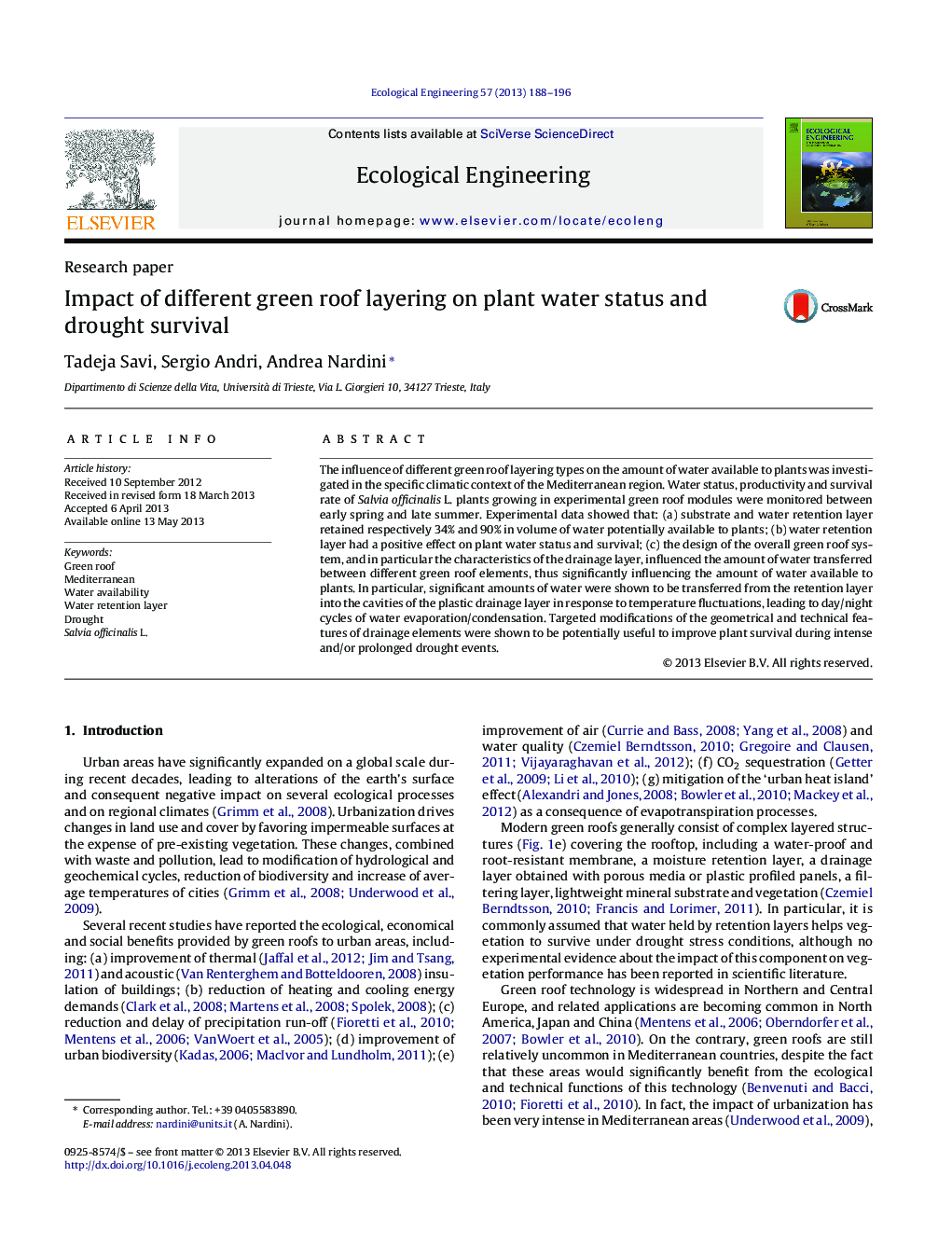| Article ID | Journal | Published Year | Pages | File Type |
|---|---|---|---|---|
| 6302608 | Ecological Engineering | 2013 | 9 Pages |
Abstract
The influence of different green roof layering types on the amount of water available to plants was investigated in the specific climatic context of the Mediterranean region. Water status, productivity and survival rate of Salvia officinalis L. plants growing in experimental green roof modules were monitored between early spring and late summer. Experimental data showed that: (a) substrate and water retention layer retained respectively 34% and 90% in volume of water potentially available to plants; (b) water retention layer had a positive effect on plant water status and survival; (c) the design of the overall green roof system, and in particular the characteristics of the drainage layer, influenced the amount of water transferred between different green roof elements, thus significantly influencing the amount of water available to plants. In particular, significant amounts of water were shown to be transferred from the retention layer into the cavities of the plastic drainage layer in response to temperature fluctuations, leading to day/night cycles of water evaporation/condensation. Targeted modifications of the geometrical and technical features of drainage elements were shown to be potentially useful to improve plant survival during intense and/or prolonged drought events.
Related Topics
Life Sciences
Agricultural and Biological Sciences
Ecology, Evolution, Behavior and Systematics
Authors
Tadeja Savi, Sergio Andri, Andrea Nardini,
